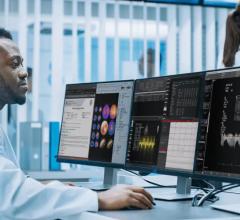

August 14, 2012 – McKesson released its Cardiology 13.0 system, which offers a single database solution for cardiac and peripheral catheterization, hemodynamic monitoring, electrophysiology (EP), echocardiography, vascular ultrasound, nuclear cardiology and electrocardiogram (ECG), ECG stress and Holter management. Data entered at any point-of-care flows into the electronic health record (EHR) without the need for potentially cumbersome interfaces or redundant documentation. This latest release is designed to boost clinical efficiencies and reduce operational costs.
In the October 2011 KLAS Cardiology 2011 report, providers ranked the McKesson cardiology solution to be the most complete solution in the study.[1] The new version of the solution is more comprehensive with the addition of EP, stress, Holter and inventory management modules.
“The McKesson Cardiology EP is a one-of-a-kind, complete, patient-centric solution,” said Andrea Russo, M.D., director of cardiac electrophysiology and arrhythmia services, Cooper University Hospital and professor, Cooper Medical School at Rowan University. “Generally, cardiology department electrophysiology documentation is spread across at least four databases, as well as paper records. This solution integrates all essential cardiovascular information, which will ultimately lead to increased lab efficiency, improved data accuracy and improved efficiencies for cardiology staff.”
With McKesson Cardiology 13.0, all data — from pre-procedure and intra-procedure information to physician reporting to American College of Cardiology (ACC) National Cardiac Data Registry (NCDR) — is integrated and immediately available to physicians to review or share with other caregivers. “The more information we can acquire from one source, the less data entry required and the less chance of inaccuracy,” added Russo. She also noted the benefit of customizable reporting capabilities, an ACC ICD data capture and overall ease of use as unique benefits.
As part of its research and development effort, McKesson teams worked closely with physician members of the Heart Rhythm Society (HRS), whose mission is to improve patient care through the advancement of healthcare policies and standards. The electrophysiologists from HRS praise the new McKesson release, calling for its design to become the industry standard.
“Until now, hospitals across the country have been using various vendor solutions with adequate functionality, but poor usability at the point of service,” said Michael Mirro, M.D., a nationally noted member of the HRS and the ACC, as well as clinical professor of medicine at Indiana University and medical director, Parkview Research Center and electrophysiologist, Parkview Physician Group-Cardiology. “Staff typically had to enter the same data in multiple places, and the available systems didn’t support real-world workflows. By harmonizing all data fields, McKesson Cardiology 13.0 simplifies the data entry, including physician reporting and ICD registry workflow. In doing so, the solution helps to save staff time and reduce operational costs. This is why the HRS is now working with other professional societies to use this solution as the foundation of new healthcare IT standards.”
In addition to newly added EP and stress/Holter management capabilities, the 13.0 release includes a new inventory management module. Tightly integrated with the McKesson Point of Use Supply management module, the new solution is designed to provide documentation, billing and management for inventory in the cardiovascular department. With a single barcode scan into McKesson Cardiology, for example, the system will automatically update clinical documentation, generate charges, adjust stock levels and electronically send orders to the hospital materials management system.
Mirro calls for greater collaboration between technology providers and clinicians. “This level of collaboration between the healthcare technology community and physician leaders is exactly what it takes to create the most advanced technology solutions,” he said. “With 13.0, McKesson has done a great thing for the entire cardiology community.”
For more information: www.mckesson.com
Reference:
1. Source: Cardiology 2011: Will the Complete CVIS Please Stand Up? Report, October 2011, www.KLASresearch.com, 2011 KLAS Enterprises, LLC.


 May 15, 2024
May 15, 2024 








